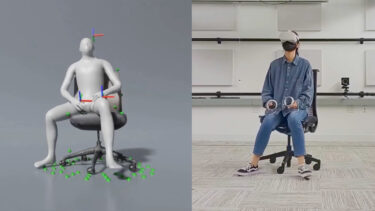Meta makes big advances in Quest full-body motion capture

Meta is making significant progress in creating more realistic avatars for Quest gamers, estimating leg movement without dedicated trackers.
Meta has been teasing full-body avatars that include legs since last year. Given the lack of hardware designed for body-tracking, the Quest 2's ability to match the movement of your hands is already impressive.
While virtual hands arrived on the Quest platform in 2019, the VR leader is still refining its model and enabling new Hand-tracking features to take advantage of the improved accuracy. The latest research, published on Arxiv, attempts to solve a much harder problem — leg tracking.
Your Meta Quest doppelganger
Just as your Quest virtual hands estimate the positions of your fingers and hands, the new QuestEnvSim estimates your entire body and creates an avatar that attempts to mimic your movement.
In a video demonstration, a person wearing a Quest VR headset changes poses and moves around various obstacles. The computer-generated counterpart obeys the physics of its VR environment, stepping up and over obstacles, sitting on couches and stools, and sitting on the floor.
The researcher wears a Quest 2, but the same system should enable leg-tracking on the Quest 3 and Quest Pro.
While it doesn't always match precisely, Meta's full-body tracking seems surprisingly accurate. More work will be needed before releasing it, however. Near the end of the video, you can see the poor avatar stumbling, falling, and in some cases, being unable to get up again.
Note: Links to online stores in articles can be so-called affiliate links. If you buy through this link, MIXED receives a commission from the provider. For you the price does not change.